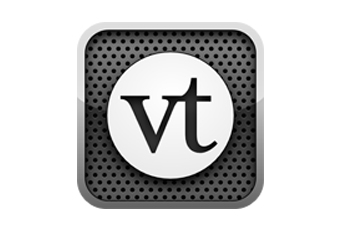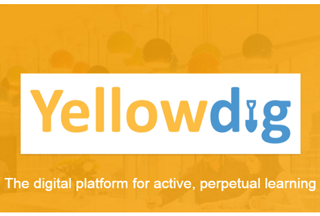Educational Technology: Collaboration
Connecting & CollaboratingDelivering ContentAcademic IntegritySynchronous and Asynchronous Learning Tools
Synchronous learning occurs in real time. A great example of synchronous learning is video conferencing. With synchronous learning, you can interact with students using video, audio, polling, quizzing, and even sharing your screen. Asynchronous learning, on the other hand, allows for collaboration and communication at any time. Examples of asynchronous learning allows students to provide in-depth responses and feel a stronger sense of community online. Below are the tools Teaching Innovation and Learning Technology offer for synchronous and asynchronous learning for you and your students.
FeedbackFruits (Asynchronous)
![]() FeedbackFruits offers a host of different tools that allows for peer review, group member evaluation, automated feedback, and interactive study materials.
FeedbackFruits offers a host of different tools that allows for peer review, group member evaluation, automated feedback, and interactive study materials.
FeedbackFruits has built their suite of tools around the belief that skills like critical thinking and higher-order thinking can be cultivated through active learning. These tools will allow instructors to easily design complex activities by standardizing some of the logistics and heavy lifting of tracking student progress. The tools will also make it easier for students to participate in these activities because of the intuitive interface that is built into Blackboard.
VoiceThread (Asynchronous)
 VoiceThread bridges the gap between real-time discussions and standard video lectures or online presentations. A VoiceThread allows people to have conversations and to make comments using any mix of text, a microphone, a web cam, a telephone, or uploaded audio file. You can create VoiceThread in your Blackboard course and use it as a multimedia alternative to the traditional BB discussion thread.
VoiceThread bridges the gap between real-time discussions and standard video lectures or online presentations. A VoiceThread allows people to have conversations and to make comments using any mix of text, a microphone, a web cam, a telephone, or uploaded audio file. You can create VoiceThread in your Blackboard course and use it as a multimedia alternative to the traditional BB discussion thread.
Yellowdig (Asynchronous)
 Yellowdig is an online social learning community that can be used within Blackboard. It has a modern, familiar feel and is appropriate for today's students, who thrive on online learning. With the feed and "pinning" style they are used to, students have a better chance of participating in discussion with their peers - thus, contributing to learning! Yellowdig promotes collaboration, pushing the importance of sharing ideas to learn more. After all, everyone can benefit from learning another perspective. Students are awarded points for completing/receiving various tasks/feedback: posting, commenting, liking, and tagging - which are terminologies they are used to and can thrive on. Teachers require a set number of points per week or semester, and then sync it to their online gradebook for ease and efficiency. Get your students started with Yellowdig today and see what knowledge they can dig up!
Yellowdig is an online social learning community that can be used within Blackboard. It has a modern, familiar feel and is appropriate for today's students, who thrive on online learning. With the feed and "pinning" style they are used to, students have a better chance of participating in discussion with their peers - thus, contributing to learning! Yellowdig promotes collaboration, pushing the importance of sharing ideas to learn more. After all, everyone can benefit from learning another perspective. Students are awarded points for completing/receiving various tasks/feedback: posting, commenting, liking, and tagging - which are terminologies they are used to and can thrive on. Teachers require a set number of points per week or semester, and then sync it to their online gradebook for ease and efficiency. Get your students started with Yellowdig today and see what knowledge they can dig up!
Zoom (Synchronous)
 Over 2,500 educational institutions use Zoom for virtual classrooms, online courses, group projects, and more. With Zoom you can easily bring in virtual guest lecturers, run virtual office hours, promote team meetings for study groups and team projects, and run a 'borderless classroom with remote participants who can see your presentation as well as each other.
Over 2,500 educational institutions use Zoom for virtual classrooms, online courses, group projects, and more. With Zoom you can easily bring in virtual guest lecturers, run virtual office hours, promote team meetings for study groups and team projects, and run a 'borderless classroom with remote participants who can see your presentation as well as each other.